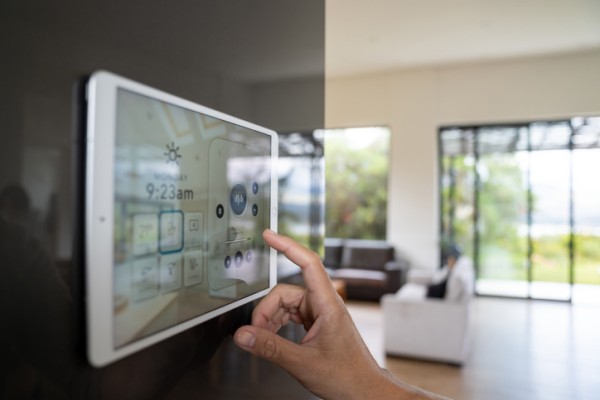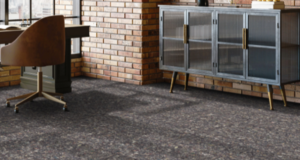
A smart home uses connected technology to automate, control and monitor various systems in your house — from lighting and heating to security, energy and appliances. Think of it as a home that can respond to your routines, your preferences and even the weather, often from your phone or by voice command.
For Australian households, smart home tech isn’t just a luxury anymore. It’s becoming a practical solution for improving energy efficiency, boosting comfort and enhancing safety, especially when paired with solar panels, battery storage or energy management systems.
Core features of a smart home
A smart home isn’t just one product — it’s a system of devices that talk to each other via a central hub or app. These are some of the key areas you can automate or control:
Lighting
Control lights remotely, schedule them to turn on or off at set times, or adjust brightness and colour. Smart lighting can integrate with motion sensors, voice assistants or dimmers for hands-free operation.
Heating and cooling
Control split systems, ducted air conditioners or ceiling fans from your smartphone. Smart thermostats can also learn your habits and adjust automatically to keep things comfortable and efficient.
Security and access
Smart locks, doorbells and cameras let you see who’s at your door, unlock the house remotely, or monitor the property while you’re away. Many systems can send real-time alerts to your phone.
Appliances
Fridges, washing machines, ovens and even coffee machines can now connect to your home network. You can monitor their usage, control them remotely or get alerts when maintenance is due.
Energy and water use
Smart home tech integrates with EMS systems to track power consumption, automate off-peak usage or optimise solar storage. Smart irrigation controllers help you reduce water waste by syncing to local weather.
How does a smart home work?
Smart homes use a mix of wireless communication (like WiFi, Zigbee or Bluetooth), central hubs and cloud services to let different devices ‘talk’ to one another — and to you.
You can usually control everything via:
- A mobile app
- Voice assistants (like Google Assistant, Siri or Alexa)
- Central touchscreens or wall panels
- Automated routines and schedules
For example:
➡ Your EMS detects a drop in solar production → switches off the pool heater
➡ Your phone location triggers the garage door to open when you arrive
➡ A smoke alarm activates the lights to guide you to the exit
All of this happens through software you configure — but once it’s set up, the system does the thinking for you.
Benefits of smart home technology
Convenience
Control your entire home environment from the couch — or from work. Forgot to turn off the lights? Check your app.
Energy savings
Smart systems can reduce waste by switching off unused appliances, running loads during off-peak times and fine-tuning heating or cooling.
Improved comfort
Program your home to suit your lifestyle. Wake up to the blinds opening and heater switching on. Or set the AC to kick in just before you get home.
Better security
You can answer your door from anywhere, monitor live footage or receive alerts about suspicious activity.
Accessibility
Smart tech can assist people with mobility or vision impairments through voice control, automated routines or remote access.
Smart homes and new builds
If you’re building a new home, now’s the time to think about smart integration. It’s far easier (and cheaper) to wire up sensors, hubs and controllers during construction than after.
Talk to your builder or electrician about:
- Structured cabling for data and control
- Centralised smart lighting systems
- Compatibility with solar, batteries or hot water systems
- Upgradable platforms that won’t become obsolete
What to watch out for
- Compatibility issues: Not all devices work with all hubs or apps. Choose an ecosystem (like Google Home or Apple HomeKit) and stick with it.
- Cybersecurity: Anything connected to the internet can be vulnerable. Use strong passwords and keep firmware up to date.
- Power outages: Most systems have backup settings, but total smart reliance might leave you in the dark during blackouts.
- Data privacy: Some cloud-based systems collect usage data. Check privacy settings and terms of service.
Smart home vs smart device: What’s the difference?
A smart device is just one item — like a bulb, thermostat or camera — that can be controlled remotely.
A smart home is when multiple devices are linked together and managed centrally, often using automation. The more devices you connect and coordinate, the more powerful and seamless your system becomes.
Is a smart home worth it?
That depends on your goals. If you want better comfort, lower energy bills or easier access and control, a smart home offers long-term benefits. You don’t have to install everything at once — start with one system (like smart lighting or security), then build out from there.
Even basic upgrades can make a difference:
➡ Replace traditional lights with smart LEDs
➡ Add a smart thermostat or programmable controller
➡ Set up automation routines to reduce standby power





